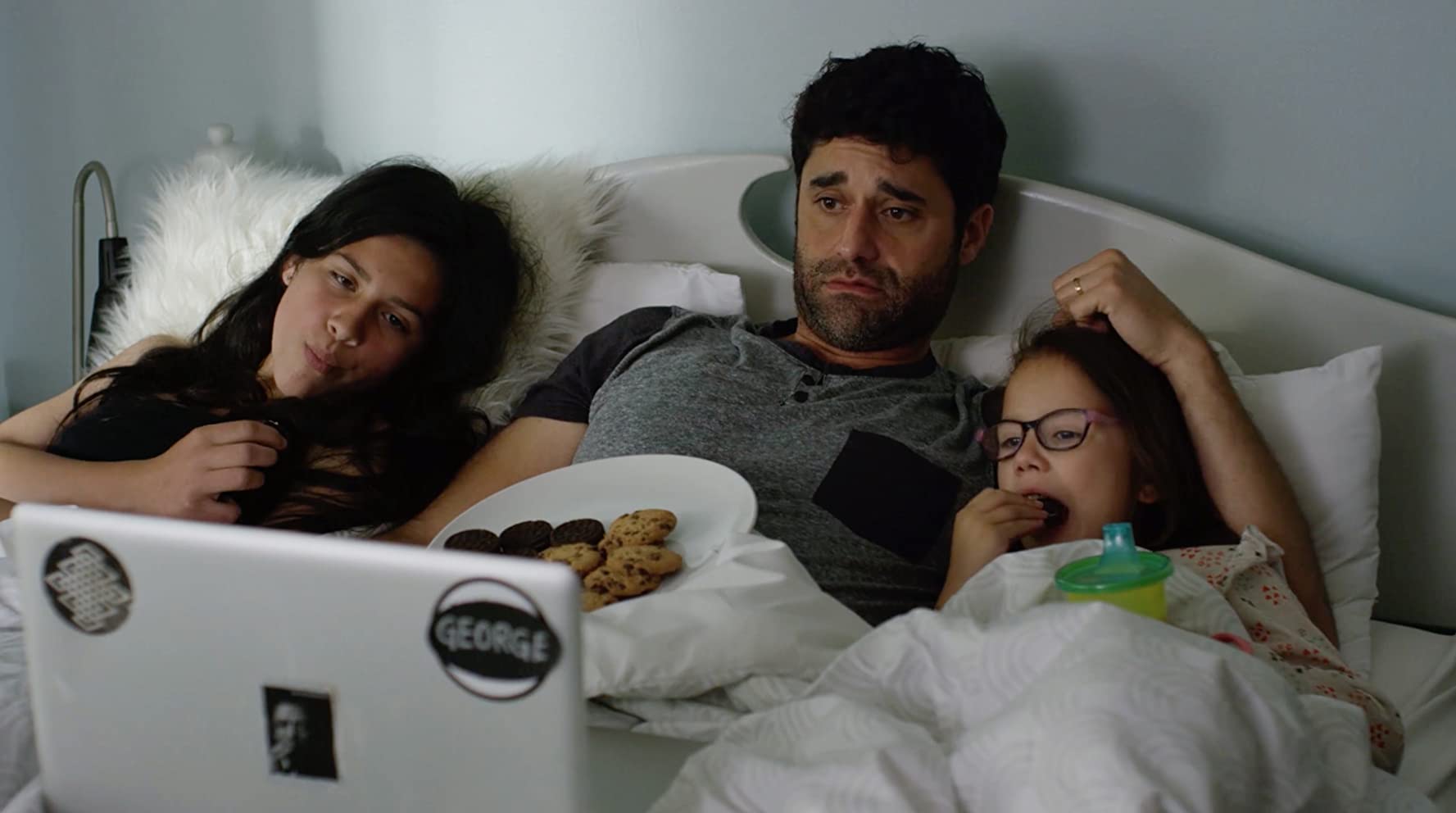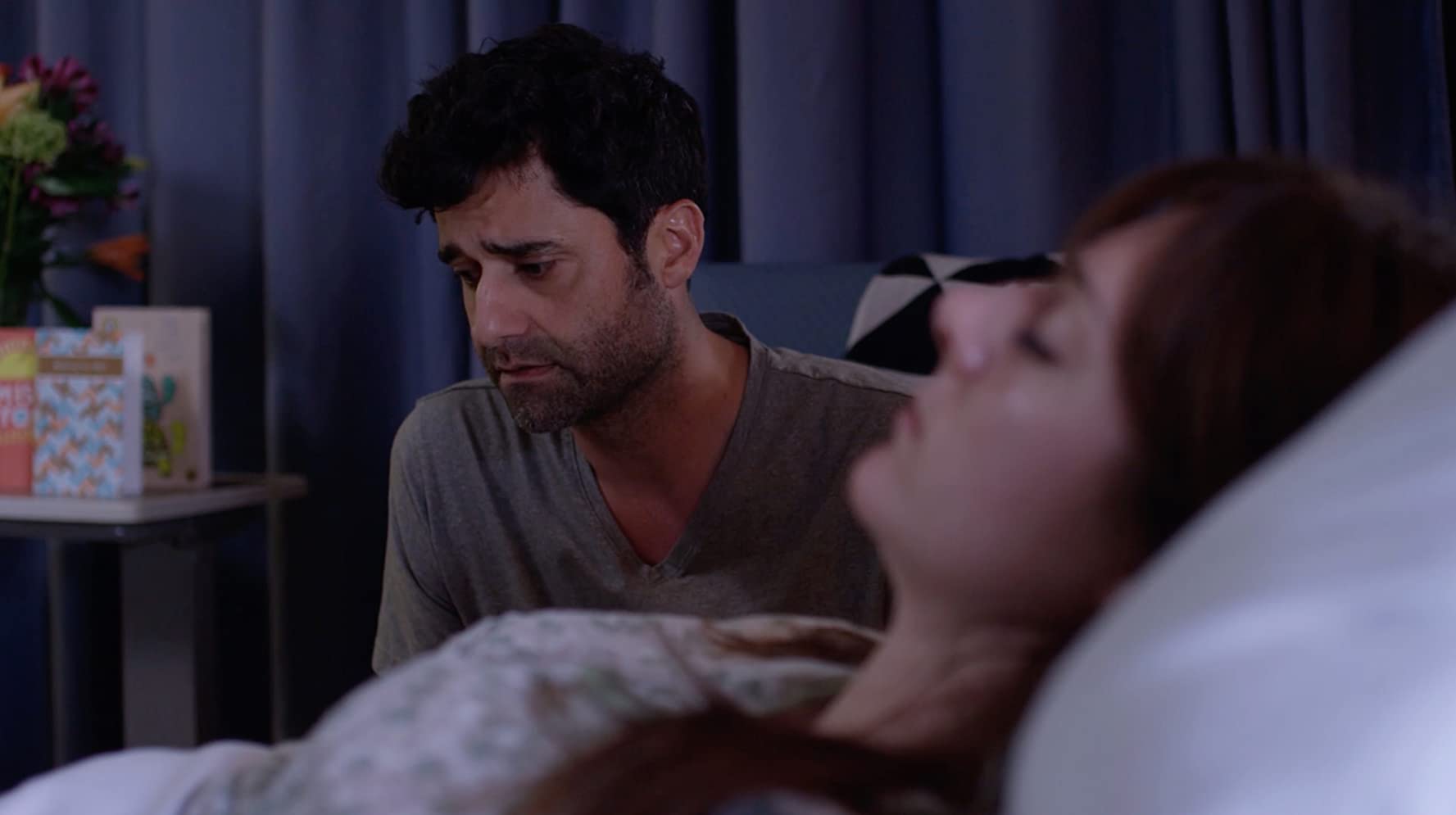
Maria Mealla is a Bolivian filmmaker based in San Fransisco, CA. Her 2019 film, Bring Me An Avocado screened at film festivals across the country and won the Audience Award for Best Drama at the 2019 CineQuest Film Festival.
Synopsis: Robin and George are parents to two vivacious little girls. They are a loving and playful couple, full of faults yet supportive of each other and willing to learn as they go. In a fateful event, Robin crosses paths with a panicky teenager who attempts to rob her at gunpoint. The violent encounter leaves Robin in a coma and her family in shock.Her sister Greece and best friend Jada step in to help George maintain a sense of normalcy for his daughters; Jada brings the fun and distraction while Greece provides the structure. As they adapt to their new roles, they find themselves in a vacation-like state packed with fun family activities that coat the shock of Robin’s absence. But as time passes and Robin’s coma continues, they are forced to face their grief and trauma in an overbearing routine that reveals the worst in all of them.
*This interview has been edited for length and clarity
Q: Where did you get the idea of the story?
MM: I started writing the film in 2014. My mom got diagnosed with dementia in Bolivia and I went down there for like three months with my husband and my family. I was just so taken by the grief of the experience. I put Robin in a coma so I wouldn’t have to focus the dementia aspect of it but lift the lens and focus more on the family and how the family was grieving, how my family was grieving. It pulled up all these things. I was getting to know my aunts and my sister in a way I had never gotten to know them before. I was getting to know myself in a way I had never known before. I was super emotional, I was very cowardly at times, it was terrifying. When you are grieving for someone who is dying slowly it is a totally different experience than someone who has died right away. The shock hits you differently. With that concept, I wrote Bring Me an Avocado, put the mom in a coma and kind of took those traits and made an ensemble cast that could represent all of them.
Q: How many drafts do you go through?
MM: We shot the 21st draft of the script, a lot of changes.The last two drafts of it were just for budget constraints, cutting scenes/ rewriting scenes to happen somewhere more affordable. The picnic scene at the beginning was originally meant to be at a hair salon where they were getting mani pedis. The scene where they were playing soccer in the streets was originally the Dad taking his daughters to an actual soccer game — all things that were way too expensive!

Q: Grief in the film was so essential, and grief can be something very personal and very intimate. Was it a challenge to create that familiarity in your script in a way that was universal for your audience?
MM: I mean honestly, I didn’t know how people were gonna relate to it because I was writing it from my own open wound. The other day I heard another writer say this, and I think it rings true, “the more intimate your storytelling is, the more universal it becomes.” It’s just one of those weird things, when people try to write for everyone, when you try to write something for people, it’s less relatable a lot of the times because it becomes too high level and broad. When you are writing from an intimate place that is addressing personal emotions and reactions. We’re all human beings and some level it becomes more relatable that way.
Q: There are a lot of quiet moments of vulnerability with your characters, especially seen through the use of close ups, was that choice something in the working drafts or something that happened once filming began?
MM: Those moments weren’t written into the script but they came through the exploration and brainstorming with my director of photography, Gavin. We were talking about how we wanted to portray this, and we wanted to get in there, in their space and make it as intimate as possible.

Q: What drove you to include the messier aspects of grief into the narrative?
MM: The fact that we don’t usually see them. It’s one of those things. Because nobody talks about those moments, they are so hard to talk about when they are happening to you and nobody portrays them in film usually. Usually in film and media we get all of these more dramatic or graceful portrayals of grief. So they are showing you extremes. The big dramatic moments and the super sad graceful moments. But it’s messy and you have to go through these day to day activities because you have no choice. You have to eat, you have to do your laundry. You’re going through it! When I went through it, I was not prepared for it because people don’t talk about it openly. Nobody wants to talk about the moment you are doing your dishes and then suddenly, because you are doing this repetitive thing, you just get fully overwhelmed in your emotions. So those moments that I didn’t expect to live because I had never seen them anywhere is what I wanted to put on the screen. Something that represented more accurately my experience of grief.
Q:Looking at the film as a whole, what were some of the biggest challenges in bringing it to life?
MM: There were a good amount of challenges! Our cast, it’s an ensemble cast, and I had so many challenges around that. We actually pushed the shooting of the film out twice, because of funding and other challenges that we came across. One week before we were ready to shoot, I lost one of my lead actors. Molly Rattermann, who played Greece, she came on to the project like five days before we started filming it. She was actually at Cannes! She was at the festival, and she flew back early to be in the film, she auditioned via Zoom. Candice, the woman who plays Jada, during the pushing of the film, she ended up moving to Maryland. She used to be local to the Bay Area, so I had to figure out how to fly her out and y’know suddenly I was working with actors that were flying into the city which was not my intention having to budget for travel and lodging. But we figured it out!
Q: As a writer, what scene were you most excited to see executed on screen?
MM: The bee scene! The scene where they are taking over the bowl of soda to feed the bees. It was just so fun to write, and it reminded me of being a kid. While I never did that with bees, I remember as a little girl, I used to leave a trail of Lucky Charms marshmallows for the ants. My madrina would be like “Que estás haciendo, esta cochinada!” and be like “This cereal’s expensive, carajo!” So when I wrote it, I felt a tender moment, true to childhood.The bees are VFX, if I tell you the amount of bee scenes I had to watch! I was trying to look up bees to try and talk with my VFX artist. He’d give me something and I’d be like, I don’t think bees move like that. It turns out if you Youtube search bees, you end up seeing a bunch of swarming, terrifying bees attacking people. I watched hours of bee content. I was happy with how it came together. My actress– my tiny talent, Poppy Sanchez was amazing in it, so that one was fun!

Q:When you were writing the script, in what ways did you want to include your own heritage?
MM: So I debated that a lot. I spoke a lot with Bernardo, who was the lead actor because he is also from Bolivia. We wanted it to be a universal story. I feel like often, especially for the Latinx community in writing and directing and acting, we get caught up telling just Latin centric stories about a very specific Latinx experience (like) the immigration experience. We don’t really get the chance to show aspects of regular life that aren’t dramatized to that extent. I wanted to have Latinx characters without spotlighting in a very exaggerated way that they were Latinx. I wanted to just show them as experiencing grief like anybody else does. But naturally in writing it, the home, I wanted it to be warm and those colors. There’s this aspect of cooking a lot together. There’s these meals that happen in the kitsch and I feel that is very true to culture too. As far as the dialogue, I just told both Bernardo and the kids, just whenever it comes naturally, go for it. That’s why it is sprinkled in here and there.
Q: Shifting gears a little bit — What’s it like being a filmmaker and a creative during these times?
MM: I have a bunch of stuff on hold indefinitely — I have two short films that I was planning on shooting this summer, that are now hopefully scheduled for next year — god forbid we have to go through this thing for one more whole year. More than anything because they have kids and it’s really hard to film anything with kids right now and both scripts shoot with kids. I have another short film that I’m turning into an animation, that before was going to be kinda live action-y but it had a lot of VFX anyways. It was a magical realism story and I’m collaborating with this Colombian animator called Miguel Rodrick so we are making a little animation together. Then, I’m just focusing on writing. I’ve got a couple of pilots and another script in the works — trying to make the most out of what I can do by myself in my living room. Your house turns into your office.
Q: What are some Latinx recommendations that you have, whether that be movies, tv, podcasts?
MM: One of the less spoken ones that I love is Undone, it’s on Amazon Prime. It touches on schizophrenia and mental illness , it’s entirely rotoscoped. It’s excellent! I just finished Love, Victor and I loved Love, Victor! Pose, Gentefied, One Day at A Time and Vida. Vida is done now but I loved Vida! It was a game changer for me — the sister dynamic reminded me of me and my sister so much, it’s always going to have a special place in my heart.
About Maria:
Info + Contact – MARIA MEALLA
About She was raised by storytellers that encouraged her to pursue filmmaking, a path which eventually led her to the beautiful city by the bay. She ventured into movie-making in 2010 and learned the craft through work trade by collaborating with other talented filmmakers on their projects.
[…] Part Two of this Interview featuring Orange County Latinx Film Programs, more history and OC Film Fiesta Stories Coming Soon! In the meantime check out some of our other interviews! […]